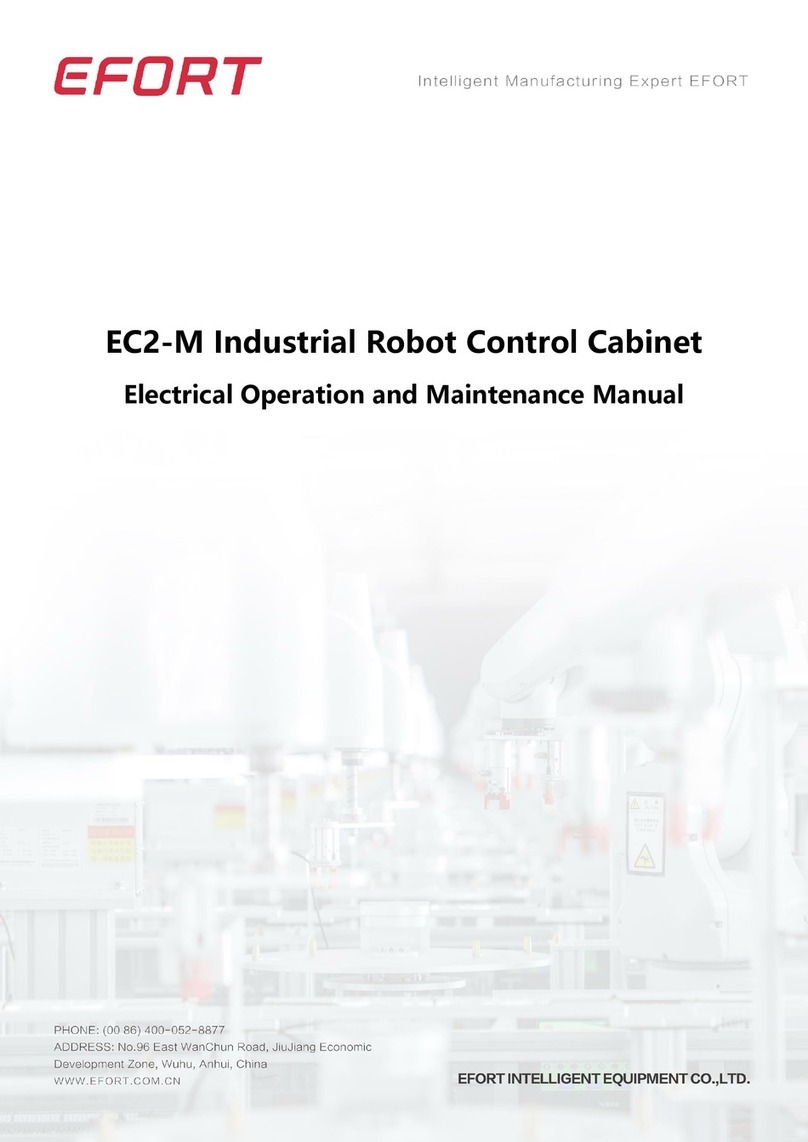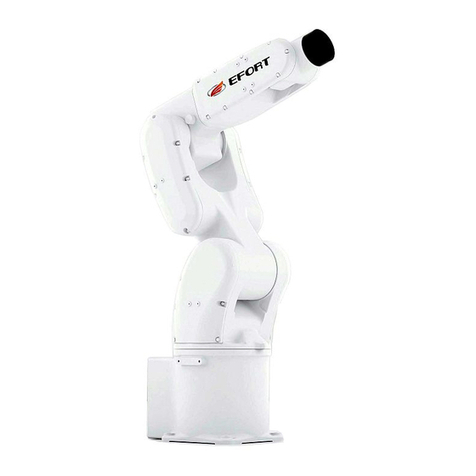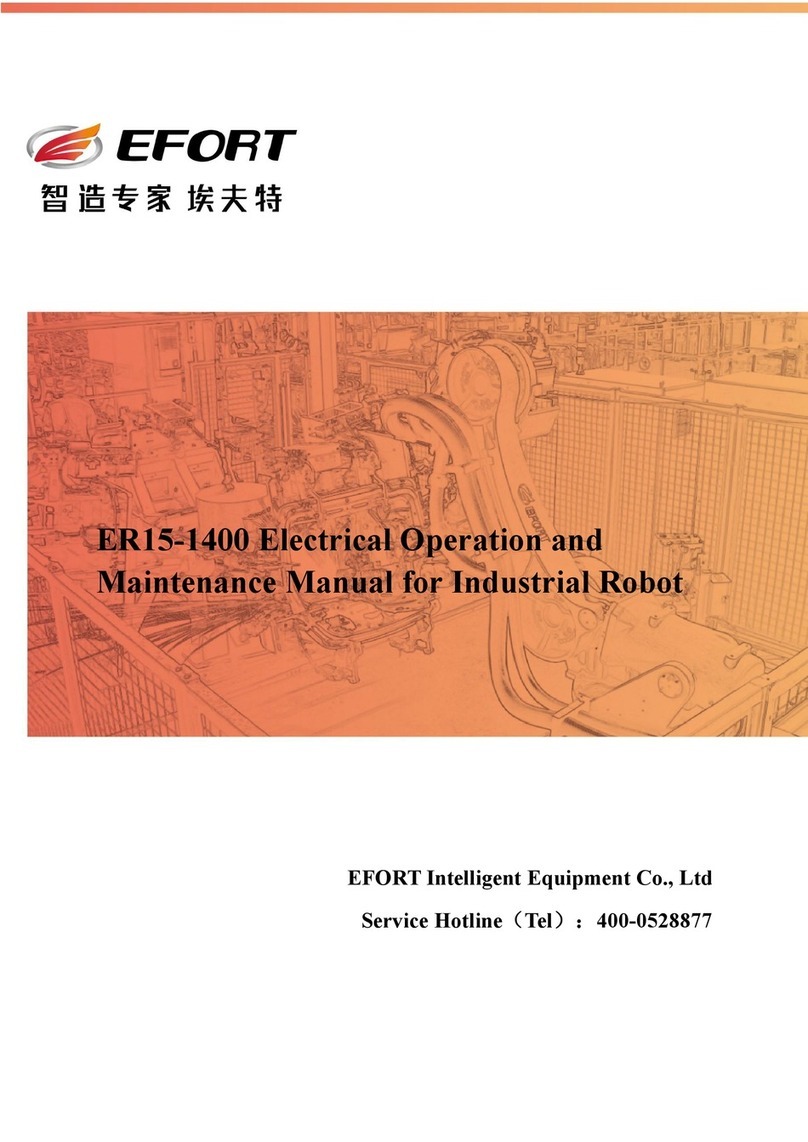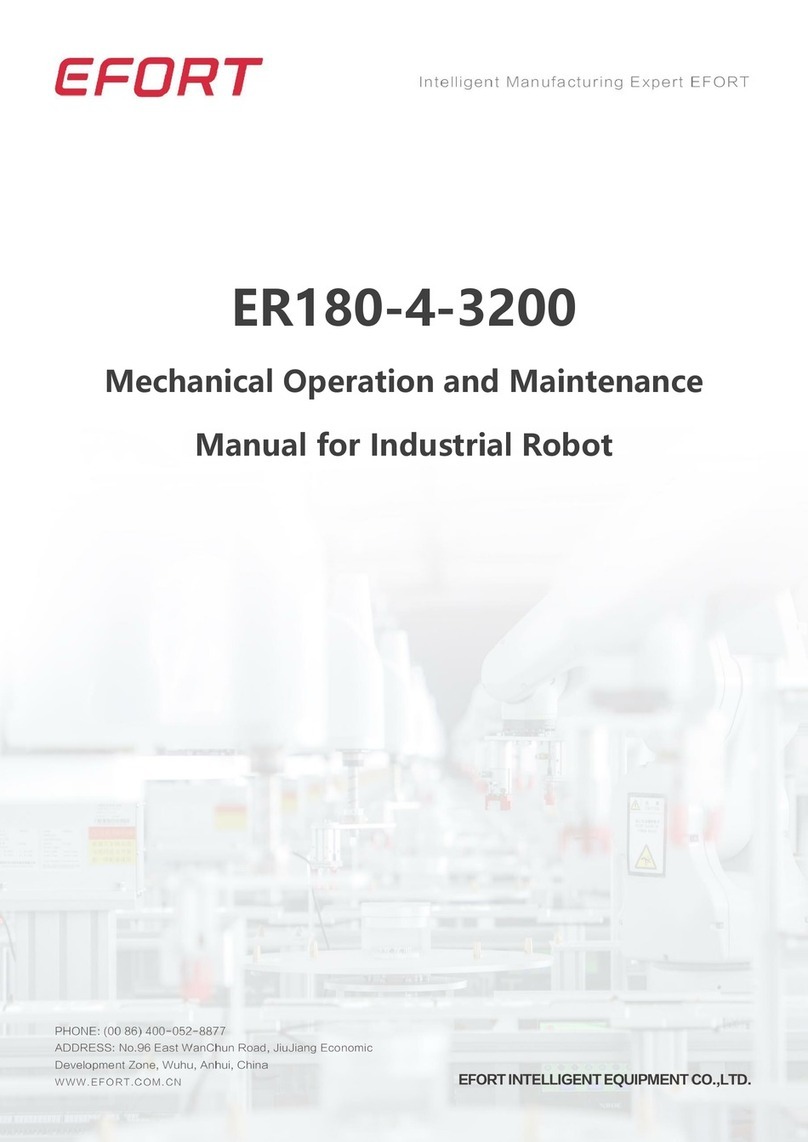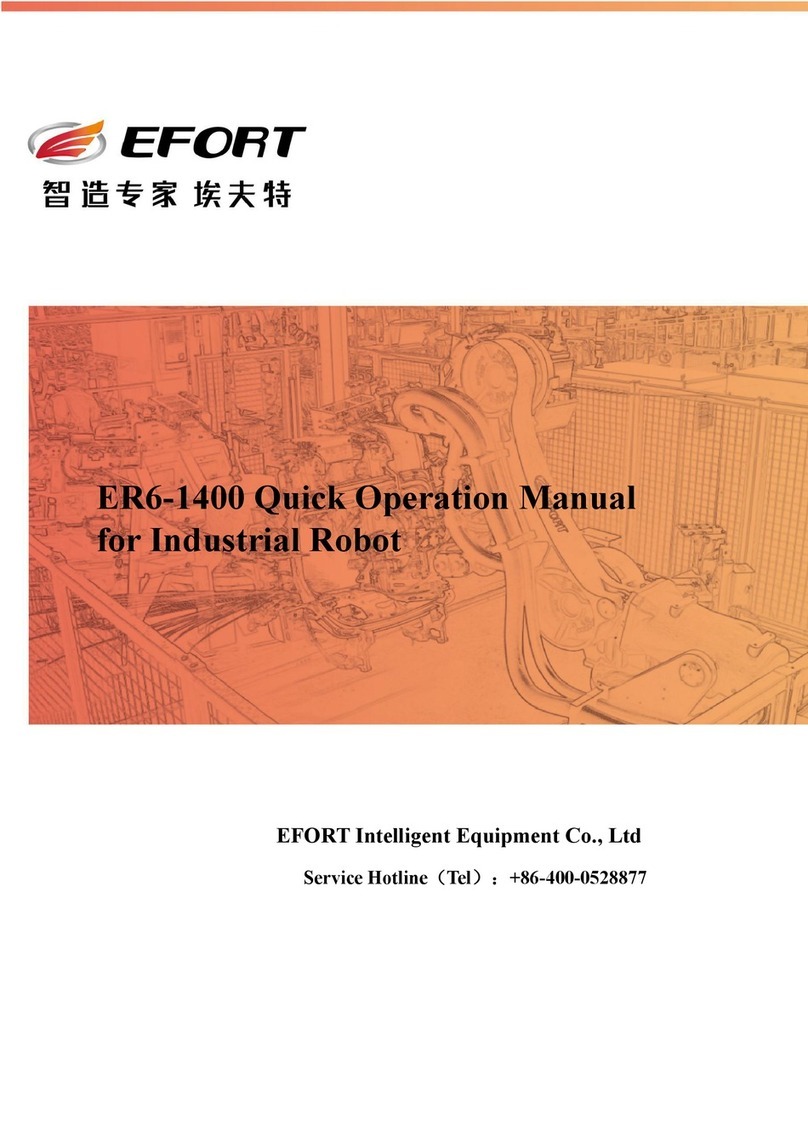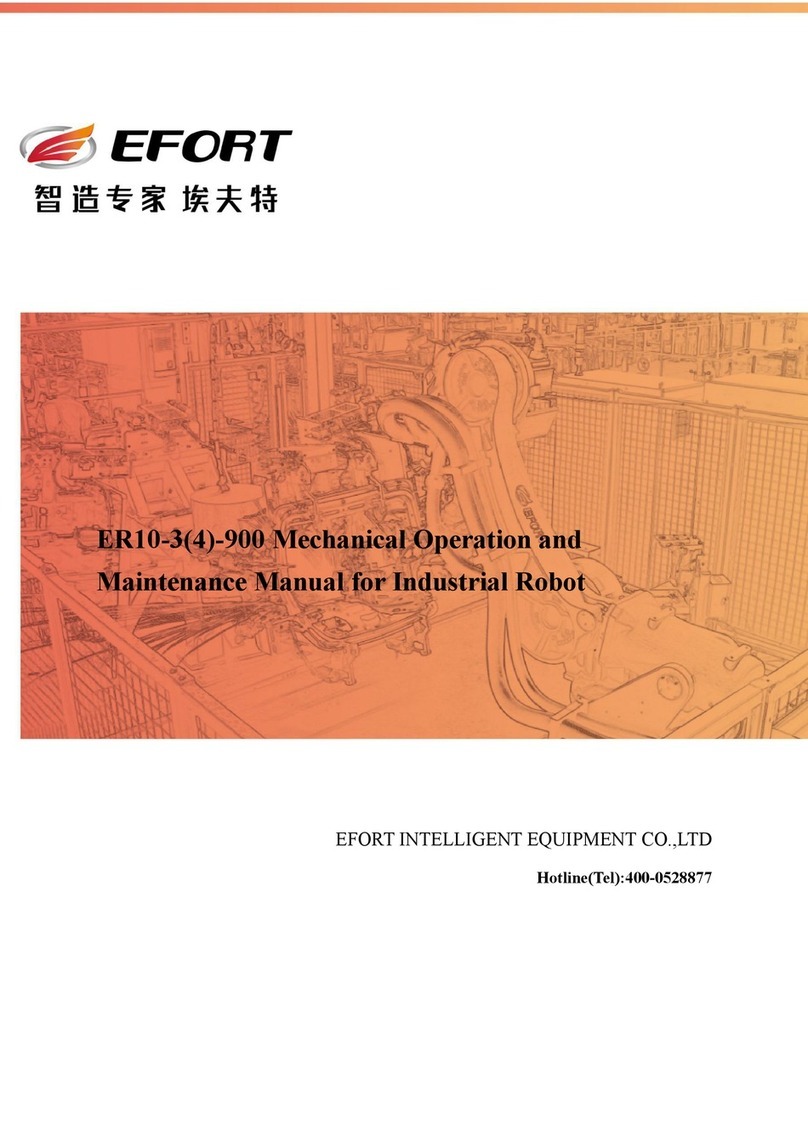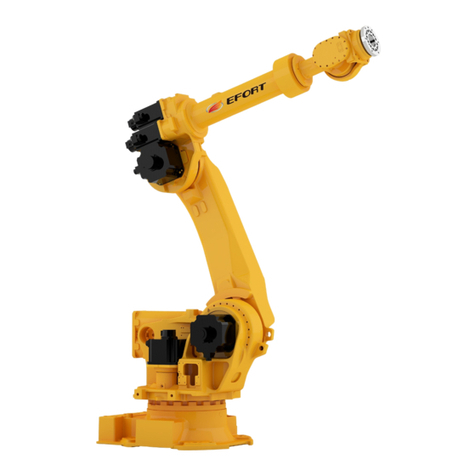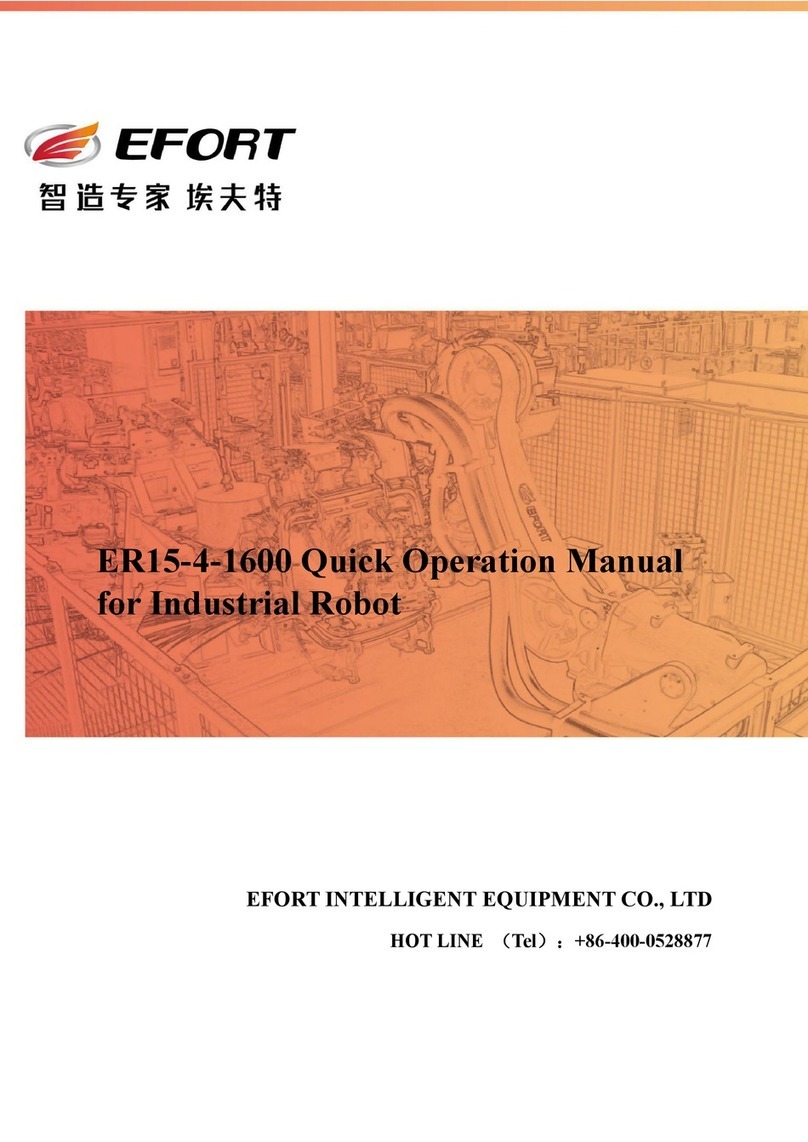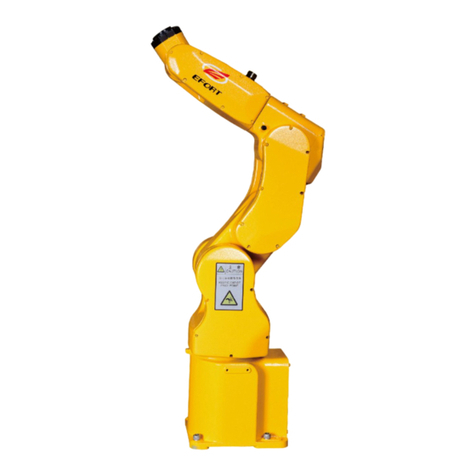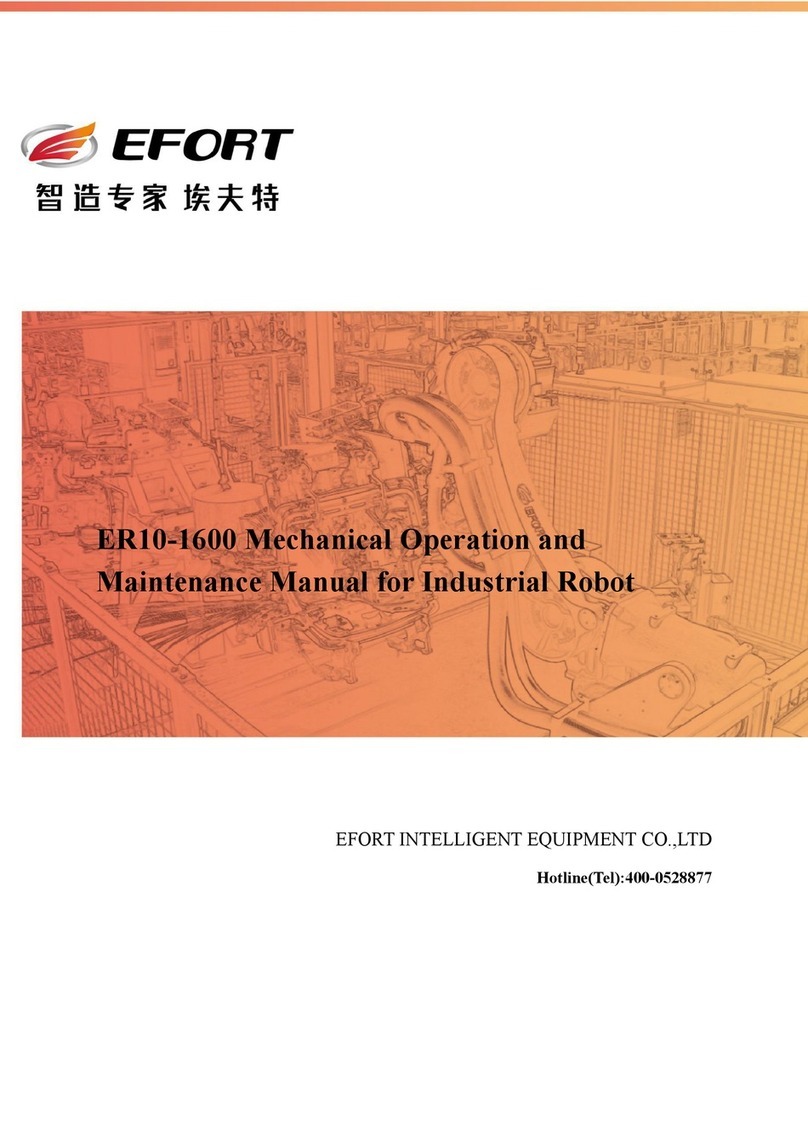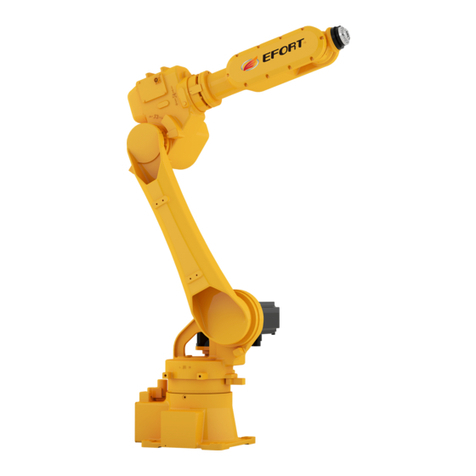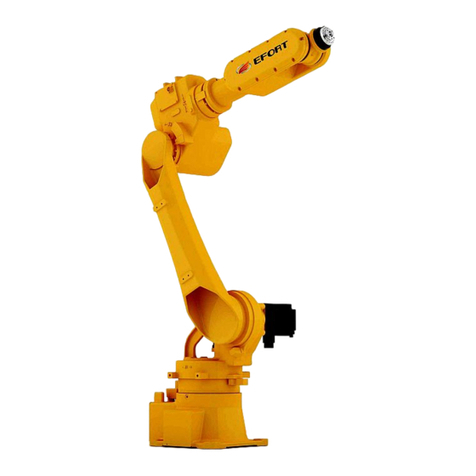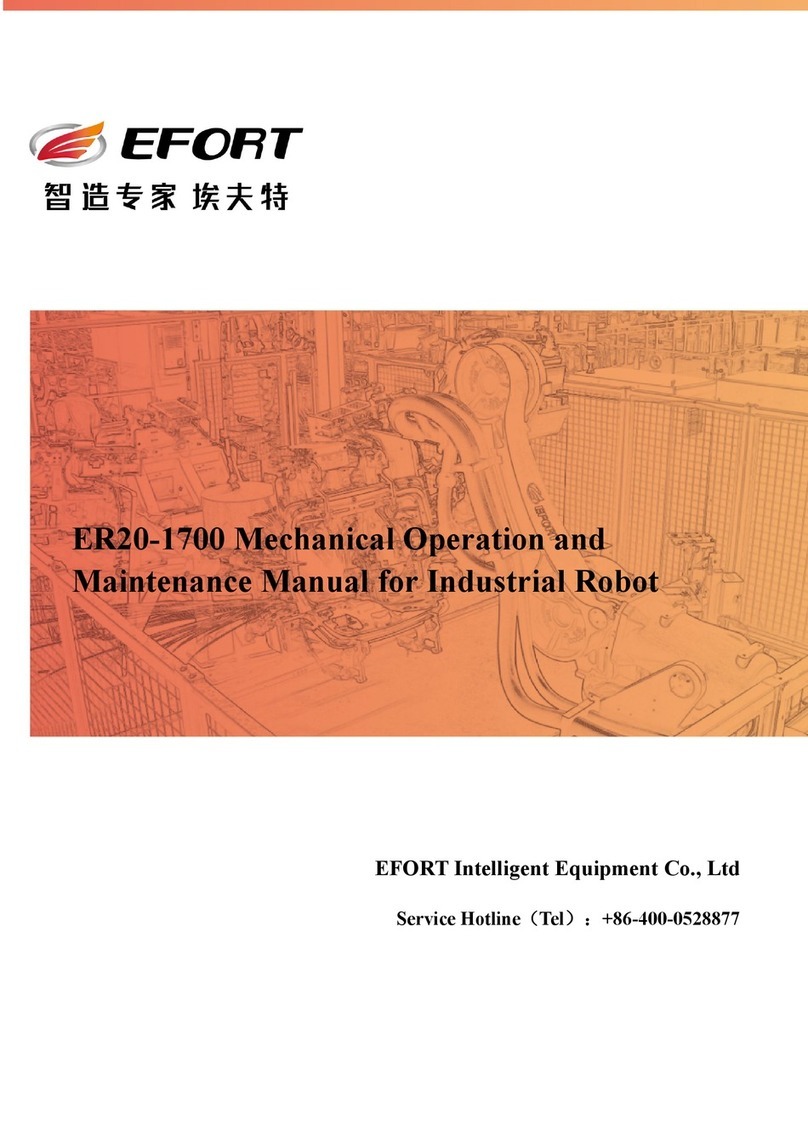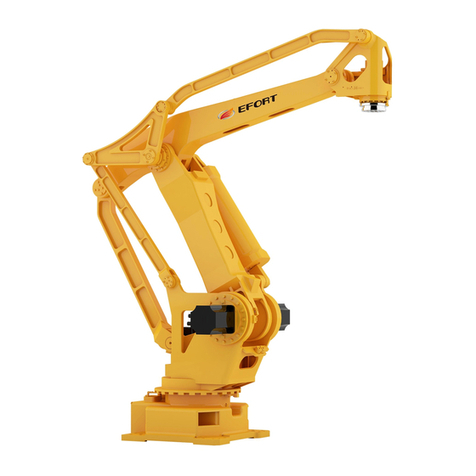
Quick Operation Manual for ER15-1400 Industrial Robot
3
Content
Chapter 1 Safety.................................................................................................................................................5
1.1 Safety instruction......................................................................................................................................... 5
1.2 Safety Regulations....................................................................................................................................... 5
1.3 Safety precautions in the process of work................................................................................................... 7
1.3.1 Safety of robot installation and connection.............................................................................................. 7
1.3.2 Safety before robot starting.......................................................................................................................8
1.3.3 Safety of robot starting............................................................................................................................. 9
1.3.4 Test run safety......................................................................................................................................... 10
1.3.5 Safety in teaching process.......................................................................................................................10
1.3.6 Security in auto-run.................................................................................................................................12
1.3.7 Safety during maintenance......................................................................................................................13
1.3.8 Safety during spot check and maintenance.............................................................................................14
Chapter 2 Handling and Installation................................................................................................................ 17
2.1 Overview....................................................................................................................................................17
2.2 Basic Description....................................................................................................................................... 17
2.2.1 Unpacking list......................................................................................................................................... 17
2.2.2 Preparation work before installation.......................................................................................................18
2.2.3 Robot storage environment.....................................................................................................................19
2.2.4 Robot operation environment................................................................................................................. 19
2.2.5 Start robot in cold environment.............................................................................................................. 19
2.2.6 Table of robot performance parameters..................................................................................................19
2.2.7 Robot workplace..................................................................................................................................... 21
2.2.8 Working space of control cabinet........................................................................................................... 21
2.3 Handling.....................................................................................................................................................23
2.3.1 Precautions for robot handling................................................................................................................23
2.3.2 Auxiliary handling tool........................................................................................................................... 24
2.3.3 Robot body handling...............................................................................................................................26
2.3.4 Handling the Control Cabinet.................................................................................................................29
2.4 Installing the Robot....................................................................................................................................30
2.4.1 Setting up a Safety Fence........................................................................................................................30
2.4.2 Robot installation method.......................................................................................................................30
2.4.3 Ground installation..................................................................................................................................31
2.4.4 Bracket installation................................................................................................................................. 32
2.4.5 Upside Down Mounting..........................................................................................................................33
2.4.6 Installation site and environment............................................................................................................33
2.4.7 Integrated application installation interface........................................................................................... 34
Chapter 3 Electrical connection.......................................................................................................................37
3.1 Robot power supply................................................................................................................................... 37
3.2 Connecting cables between the robot control cabinet and the robot body................................................38
3.2.1 The IO cable of the robot body base.......................................................................................................39
3.2.2 The IO cable of the robot body arm........................................................................................................41
